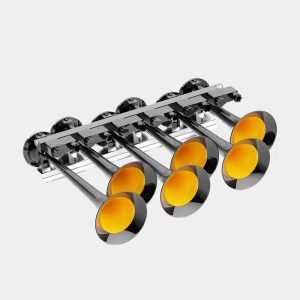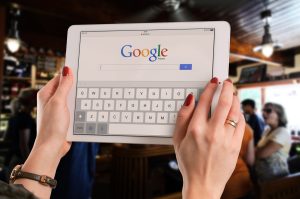How cameras and drones are effective and violate security in public
In recent years, there has been considerable discussion about employing drones and other UAVs (uncrewed aerial vehicles) in the defence sector. Although in the decades to come, drone technology will advance. Drone technology is being utilized by businesses all around the world to increase safety, boost productivity, and obtain information.
The numerous novel applications of drones in public services, such as property tracking, danger identification, disaster relief, stock observation, and data collecting for meaningful advanced analytics, can be credited for this enormous increase. Drones are also in the growing market because of their capacity to operate in highly unsafe and unavailable locations. Drones have a lot of potential as a core technology for defence in depth. Let’s identify the most significant use cases, difficulties, and contributions of AI to deploying drones for safety.
Advantages of drones for surveillance:
Authority:
The main advantage of integrating drones with AI for defence in depth is independence. Personal monitoring controllers have the risk of becoming tired and making mistakes, as well as losing focus and missing dangers. Automated UAV security measures may be obtained immediately across wide areas and configured to work consistently and dependably. They can also offer autonomous threat response, such as dispatching a drone to the alert location and providing the security crew with live video feed, pursuing individuals running away, and providing police with real-time monitoring information. Those using applications for drones in this situation are further expanded by automated object identification, safety systems, and precise resting abilities.
Keeping an eye on large, dangerous places:
Drones can quickly and efficiently monitor large areas, scan hard-to-reach locations, and gather data to assess potentially dangerous situations. Due to their ability to cover huge areas regardless of topography, drones provide better decision-making during adverse events. This enables them to get closer to threats like massive electrical zones without putting people at risk of harm. A drone can fly over rapidly, spot dangers, and deliver aerial photos and live video. Security personnel can then gauge the degree of danger and decide on the best course of action. Drones are also helpful for giving officers thorough coverage of the criminal investigation so they can completely understand the circumstances and determine the risk.
Conserve time and resources:
Regarding major manufacturing units like petroleum and natural gas sites, solar arrays, stockrooms, or safeguarding cables, continuous surveillance cameras are essential to lowering the dangers of damage and breaches and guarding against machinery and commodity robbery; drones can assist save time and money. However, the cost of purchasing, setting up, and operating sensors in remote areas is high. Drones make inspection more affordable. Drone regular patrols can monitor large regions and deliver clear photos and video instantaneously, which could reduce the requirement for on-site security personnel to guard a location or item of property.
Another benefit is speed. Drones can get to the site of an event more rapidly than a police vehicle or safety personnel, allowing them a shot to offer immediate corrective action.
The possibility that a quadcopter could be utilized to invade a person’s identity or a family’s income privacy is one of the main worries people have nowadays. Due to the widespread use of aerial drones, this idea is starting to spread.
What Privacy Threats a Drone May Cause
Because drones are so portable and simple to manage, drones could threaten privacy. Without any formal instruction, anybody can pick up a drone flight in a short amount of time. Uncrewed aerial vehicles, sometimes known as UAVs, can fly over a site and scan the yards below. A tiny flying drone can silently observe the activity within a window. Depending on who is looking for it, certain drones fly nearly entirely inaudibly, making them virtually invisible.
Acquiring New Skills
In actuality, drone technology is developing daily and becoming more capable. It covers both non-military and non-military activities. Today, the typical consumer may purchase a drone with a complimenting sensor. Some people relate to others through microphones. Lenses on more recent models may be able to close in on a subject while it is far away. Eventually, a drone might even be able to transport a tiny load. As a result, drone pilots have additional instruments to infringe on somebody’s possibility.
Rights to a private life
It’s critical to recognize that disputes still exist over individual personal liberties. Whether you deserve a right to absolute seclusion in your garden is debatable. It’s possible that using a UAV to fly overhead and take pictures doesn’t infringe on anyone’s privacy. Each time you leave your house, you might need to assume that someone is keeping an eye on you. In terms of drones and security, there haven’t been any instances that set new standards yet.
Notwithstanding the less visible concerns, we should view non-surveillance activities from a personal privacy perspective. The environment of drone usage and the kind of information collected can frequently have an unintended effect on people and have repercussions under privacy regulations. One instance is the unintentional recording of people (and their actions) by drones deployed for monitoring or investigation.
Consumptions and regulations
Helicopter pilots, health insurers, judges, and consumers may benefit from more uniformity and predictability in personal information protection rules that explicitly define security duties while utilizing drones. In an ideal world, such regulations would set forth particular security rules and guidelines relevant to drone use and follow the GDPR and other industry benchmarks for information security.
In data legislation, areas of special concern for drone pilots include the need to tell participants, the need to create document retention policies, and access to legal data protection. Many drone detractors have expressed concern that gathering aerial footage and images will enable general supervision that will let drone maintenance personnel (whether a government organization or a private person) know what people are doing at different times without the usual disclosure to particular data subject areas that would anticipate if they’re the information was gathered in another way. Such videos may be kept continuously and could be utilized to create a narrative based on personal information about an individual. For these reasons, the government should take steps to train drone operators in their proper use, and camera owners could learn through take my online course services or different video tutorials available online.



